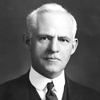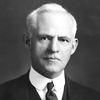Community Foundation Movement
How Goff’s Idea Has Enriched the World’s Social Capital
Cleveland banker Fred Goff did not rest on his laurels once his idea for a community trust had become a reality. He worked hard to spread the concept as broadly as possible. Even before the Cleveland Foundation was incorporated on January 2, 1914, the publicity department of Goff’s bank sent out a national press release describing the foundation’s structure, purpose and expectations of financial support. Before the month was out, articles announcing the birth of a new kind of philanthropy had appeared in the New York Times, Saturday Evening Post and two progressive journals, Outlook and The Survey. Goff also authored an article about the Cleveland Foundation for the January 1914 issue of Trust Companies magazine.

Until his death in 1923, Goff remained a tireless champion of the concept of building local resources and promoting local giving through the creation of a community foundation. He spoke with all who approached him for information, granted interviews, and addressed civic groups, bar association meetings and trust bankers’ conferences. The editor of Trust Companies became an overnight ally and regularly published articles on the formation and activities of community foundations.
Because of the American banking industry’s high esteem for Fred Goff—witness his appointment to the Federal Reserve Board’s capital issues oversight committee during World War I—his fellow trust bankers answered the call to greater service for their clients, and the community trust concept was quickly replicated in major cities from Chicago to Seattle. Twelve community foundations were established in 1915 alone. By 1919 there were 20, and the first non-U.S. community foundation was created two years later in Winnipeg, Manitoba, with a $100,000 gift from a Canadian banker.
The Trust Company Section of the American Bankers Association, which formed a permanent Committee on Community Trusts in 1920, reported the existence of 74 community foundations in the United States at the dawn of the Depression in 1931. The turbulence of the next 14 years slowed the formation of new community foundations and contributed to the demise of about 25 previously established trusts. Nevertheless, it was clear that a powerful philanthropic movement had been launched.
The logos at the left represent the movement’s earliest surviving pioneers. All of these foundations were established before March 1, 1920, according to documentation submitted by the Cleveland Foundation’s outside legal counsel, James R. Garfield, as part of his testimony at internal revenue hearings conducted by a U.S. Senate committee on finance in 1921.
To meet the emerging needs of the field, the Cleveland Foundation joined with 40 of its peers in 1949 to start a professional organization. A forerunner of the Council on Foundations, the National Council on Community Foundations facilitated the exchange of information among its members and fostered the creation of new community trusts. Thirty years after the council’s formation, 225 community foundations were working to improve the quality of life in cities across America. Their combined assets totaled $1.4 billion in 1978.
The next three decades were a time of explosive growth for the U.S. field. Today the Council on Foundations, the field’s professional development and advocacy organization, has about 700 community foundation members. As of 2010, America’s community foundations had combined assets exceeding $55 billion and distributed more than $4 billion in annual grants.
But the intrinsic value of Goff’s concept goes beyond the amassing and awarding of financial resources. As evidenced by the spread of community philanthropy throughout the world, from Astrakhan, Russia, to Mozambique, to New Zealand, the concept’s universal appeal lies in a community foundation’s ability to bring people together around a common cause. From the asset-rich cities and towns of Germany to rich-in-spirit societies such as the Bedouin tribes of Egypt’s South Sinai and the matriarchal rural villages in the Indian states of Gujarat, Madhya Pradesh and Bihar, the community foundation concept has been adopted and adapted because it harnesses the power of the charitable impulse found in all cultures: the desire of people to help one another by sharing resources for the common good.

